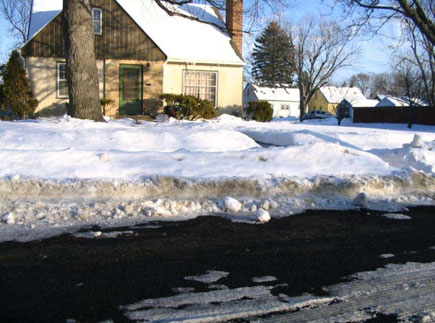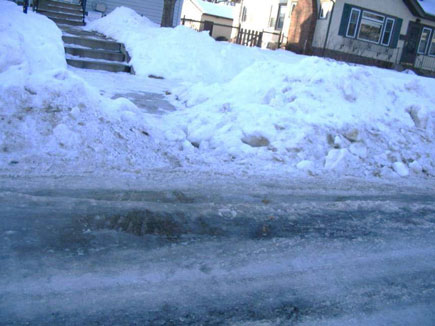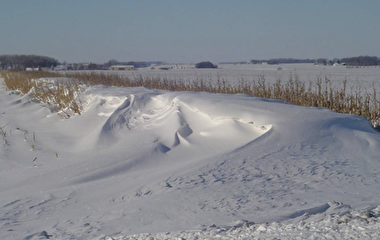In the quest for pavement options that improve road safety and are friendly to the environment, permeable pavements may be an answer, according to findings of a new study.
Researchers led by Professor John Gulliver of the Department of Civil, Environmental, and Geo- Engineering (CEGE) completed a comprehensive review of permeable pavement research and construction in northern climates. The project, funded by the Minnesota Department of Transportation (MnDOT) and the Minnesota Local Road Research Board, revealed that permeable pavement systems offer a number of environmental and safety benefits.
Permeable pavements are designed to absorb water and allow it to drain directly into the underlying layers of a pavement structure. They generally consist of a surface layer of a permeable material (asphalt, concrete, or pavers), and then one or more layers of aggregate with void spaces that can store stormwater runoff until it infiltrates into existing soil or is carried downstream by drain tile, Gulliver explains.
reducing the need for road salt.
Infiltration is considered a “green” treatment of road runoff, and the permeable pavement will filter any water that runs off through the drain tile. Other benefits include a big reduction in water spray during storms, greater skid resistance, a smoother ride, and noise reduction, Gulliver says.
The final report includes findings from nine case studies of permeable pavements in Minnesota and other northern climates. In a project in St. Michael, for example, MnDOT researchers studied and compared the durability, maintenance requirements, hydrologic benefits, and environmental considerations of two porous asphalt sections and one densely graded asphalt section.
“The permeable pavements performed well in ride quality, permeability, strain response, safety, and quietness,” Gulliver says. “As an added environmental benefit, they also performed better in the water quality of runoff and infiltration. This could offer a solution to environmental problems involving stormwater runoff into lakes and streams, which often occurs with conventional non-permeable pavement structures.”
Additionally, the study showed that snow and ice melted faster on the permeable pavements because of the void space, which allows heat from the ground to rise and keep the pavement warmer overall. The permeable pavement was also quiet and provided better skid resistance—an important safety measure for drivers—than a dense-graded impermeable surface.
Mark Maloney, Shoreview’s city engineer, says the use of permeable pavements allowed the city to eliminate the need to build and maintain conventional stormwater infrastructure such as inlets, pipes, and ponds in the city’s Woodbridge neighborhood.
“One benefit was that the city was able to accomplish its goal of reconsidering public infrastructure to modern, sustainable standards without negatively impacting the character of residential neighborhoods,” he says.
Overall, Gulliver says, the study’s findings indicate that permeable pavement, with its many safety and environmental benefits, is a viable alternative in Minnesota. In addition, it may be the only alternative that will reduce the amount of harmful chloride from road salt reaching surrounding bodies of water.
Other researchers in the study included Peter T. Weiss of the Department of Civil Engineering at Valparaiso University, Masoud Kayhanian of the Department of Civil and Environmental Engineering at the University of California-Davis, and CEGE professor Lev Khazanovich.




